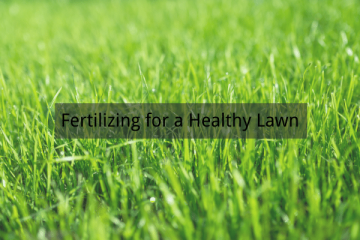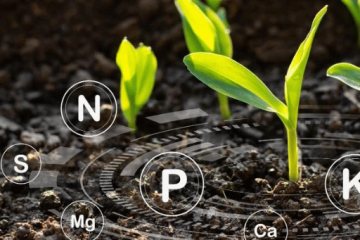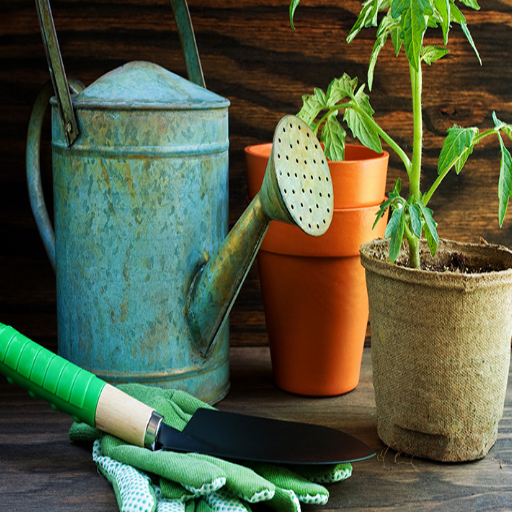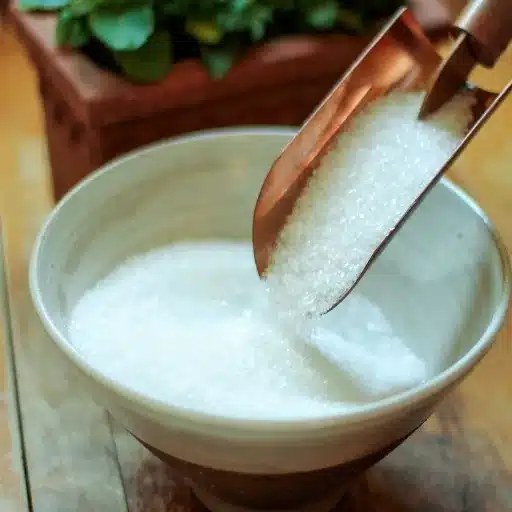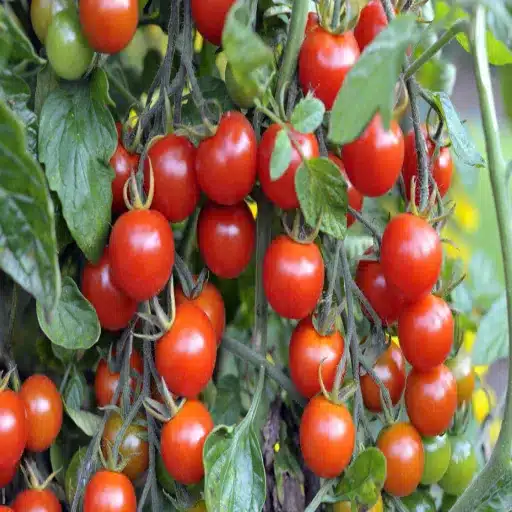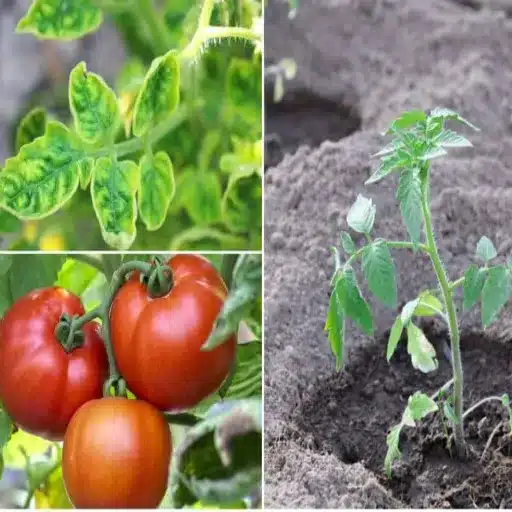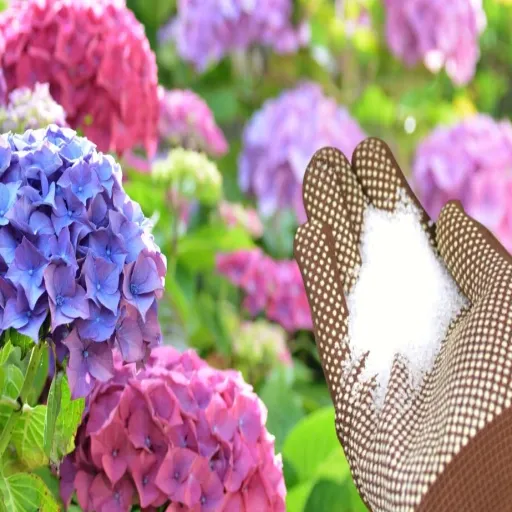Gardening enthusiasts and agricultural professionals alike are always on the lookout for cost-effective, sustainable solutions to enhance plant growth and overall health. Epsom salt, a naturally occurring mineral compound made up of magnesium sulfate, has gained notable attention for its potential applications in improving soil quality and addressing plant nutrient deficiencies. This blog explores the scientific fundamentals behind Epsom salt’s effects on plants, its practical uses in home gardening and farming, and the critical considerations for its application. Whether you’re cultivating lush flowerbeds, productive vegetable gardens, or thriving potted plants, understanding how Epsom salt works can help you optimize growth and maximize yields in a balanced, environmentally friendly manner.
How to Use Epsom Salt in the Garden?

What is the role of magnesium sulfate in plant growth?
Epsom salt, or Magnesium sulfate (MgSO4), is vital to plant growth because it contains two essential nutrients: Magnesium (Mg) and Sulfur (S). Plants rely on Magnesium as a core component of chlorophyll, which allows the plant to photosynthesize sunlight into energy. Without adequate magnesium, essential plant processes begin to fail; and the plant leaves start showing signs of yellowing foliage (chlorosis) and a pronounced weakened state. Sulfur’s role in plant processes is vital for the production of amino acids as well as enzymes and proteins which are critical for metabolism and structure building in plants.
- Magnesium sulfate composition: Weighted average containing 9.8% and 12.9% of magnesium (Mg) and sulfur (S) respectively.
- Application Rate: For foliar applications, mix 1 tablespoon of salt with 1 gallon of water and apply to the plants once every two weeks. Alternatively, pour one cup of salt mixed with water in 100 square feet of soil.
- Target Plants: Mg requires crops such as tomatoes, peppers, and roses.
When magnesium sulfate is applied appropriately, the deficiency can be overcome which promotes greener and healthier plants to grow, enhancing the yield and the quality in return.
Can Epsom salt help in seed germination?
Yes, Epsom salt aids with seed germination effectively. Magnesium sulfate provides the essential magnesium necessary for chlorophyll synthesis which helps with energy metabolism when added to the soil during the germination phase. This helps with the initial stages of a seedling’s growth.
- Dosage: Dissolve 1-2 teaspoons of Epsom salt in 1 gallon of water.
- Application Method: For better nutrient absorption, Soak the seeds in the solution for 4-6 hours before planting.
- Justification: Magnesium enhances nutrient uptake and activates enzymes that aid in sprouting for seeds.
When used in moderation, Epsom salt improves the conditions for seeds to sprout robustly which is beneficial for the overall health of the plant during the early stages of growth.
What is the Ideal Amount of Salt Per Litre for Plants?
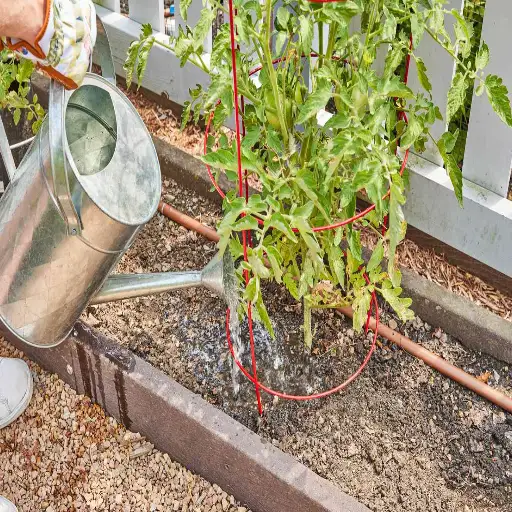
What is the recommended Epsom salt per litre of water?
For general Epsom salt care, the proper ratio for feeding is 1 teaspoon, or roughly 5 grams, for every liter of water. This concentration is considered ideal for improving the ratios of magnesium and sulfur in the soil which are essential for chlorophyll formation and enzyme systems’ activities.
- Sulfur Content: 13% Sulfur S is important for protein formation and other nutrient absorption.
- Dilution Ratio: 1 teaspoon, or 5 grams, per liter. Creating stronger solutions will increase the chance of salt buildup in the soil and applying the salt directly will result in over-fertilization.
This will be fine for your average plants, but depending on the type of plant, soil conditions, and the plant’s nutritional needs, alterations should be made. Magnesium, if administered too much, will stem calcium uptake, which will in turn restrict plant growth, so overuse is highly discouraged.
How does it affect plant leaves?
Magnesium is one of the most important nutrients for the health and functioning of the plant leaves. Each chlorophyll molecule contains a magnesium ion within its structure. This ion is critical to photosynthesis, enabling the plant to capture light energy and store it as chemical energy. Lacking magnesium can lead to interveinal chlorosis, which is a condition where the areas between leaf veins turn yellow while the veins stay green. This condition reduces the photosynthetic efficiency and general health of the plant.
- Ideal magnesium Levels: To ensure plants don’t suffer from deficiency or magnesium toxicity, soil magnesium concentration should be maintained between 50 and 120 ppm, depending on the crop and soil type.
- Symptoms: Any leaves that are yellowing and displaying signs such as curling on the edges could be flagging magnesium deficiency which should undergo soil treatment amendments with foliar spray immediately.
- Corrective Measures: Testing soil and following the correct dilution ratios minimizes the negative effects. For instance, dissolving 1 teaspoon (5 g) per liter of water minimizes negative effects while ensuring proper nutrient availability for healthy leaf development.
Maintaining these magnesium levels will improve the greenness and abundance of plant foliage while improving the overall photosynthetic activity of the plant.
What are the signs of magnesium deficiency in plants?
The deficiency of magnesium in plants usually reveals itself in some unique physiological symptoms. The most frequent symptom is interveinal chlorosis, where the area surrounding the veins of mature leaves turns yellow while the veins remain emerald green. This phenomenon occurs because magnesium is a mobile nutrient. Deficiencies primarily impact older leaves, as resources are compartmentalized into newer growth. Other symptoms can be leaf curling accompanied by necrotic spots and leaves dropping off before their time. The plants in question may also show stunted growth and underdeveloped flowering due to the loss of overall photosynthetic activity.
- Soil Magnesium Content: If soils have magnesium content lower than 40 ppm (parts per million) according to soil testing, a deficiency is likely present.
- Chlorophyll Reduction: Magnesium is an atom that resides in a central core of the chlorophyll molecule so its deficiency means losing chlorophyll content which would directly translate to the lower rate of photosynthesis.
- Magnesium Concentration in Plant Tissue: A healthy plant tissue defined in dry weight should have a magnesium concentration of 0.2-0.4%. Deficiency is present above 0.15%.
Interventions that are direct and careful monitoring alongside soil and tissue analysis help to address magnesium deficiency while ensuring plant health.
Benefits of Epsom Salt for Different Types of Plants
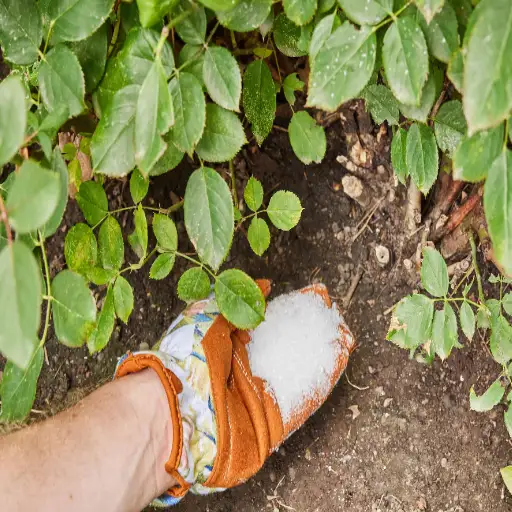
How does it benefit tomato plants?
Epsom salt or Elemental magnesium sulfate is crucial for cultivating tomatoes as it provides the much-needed magnesium and sulfur. Magnesium increases the production of chlorophyll, thereby increasing the efficiency of photosynthesis, while sulfur helps to produce amino acids and proteins. Tomato plants with magnesium deficiency will develop interveinal chlorosis which results in lower-quality fruit and decreased yield.
- Application Rate: Use 1 or 2 tablespoons with a gallon of water and mix into a foliar spray every two weeks to four weeks during the growing season.
- Target Magnesium Level in Soil: 50 – 100 ppm is optimal for growing tomatoes.
- pH Consideration: Soils with 6.0 accommodating pounds to 6.5 will ensure magnesium is fully absorbed. Adjustments need to be made before adjusting ph for maximum benefit.
Overapplication and incorrect soil pH can result in major problems for plant growth performance, and for this cause regular soil tests have to be done to get rid of these potential problems.
What is its effect on flower production?
The overall health of a flower is built on the foundation of integrated systems working hand in hand. Magnesium is an exceptionally vital part of photocrystalline systems due to its function of being the heart of the chlorophyll molecule. In addition to that, it also shows support for the very energy-driven processes occurring in the plant. Plants can directly take advantage of magnesium because it has the potential to enhance energy production causing flowers to open and bloom.
- Impact on Photosynthesis: Effortlessly broadens the scope for capturing light which is directly tied to the growth of the plant or flower.
- Flower Abortion Prevention: Softenings can make it increasingly challenging for the flower to fully develop manifested as the premature formation or dropping of the flower.
- Recommended Levels: Inversely within a range of 50-100 ppm, for growing plants, it ensures consistent flowering because the nutrients are prevalent for robust fruiting.
- pH Range: Altering the soil’s pH range to lower than 6 or above 6.5 can inhibit magnesium uptake ultimately stunting the plant’s growth. The plant must change and absorb magnesium.
In the effort to maintain the balance of restorative growth for flowers, while working to avoid overexploitation of the nutrients and toxicity, regular monitoring and adjusting of soil magnesium content must take place.
Is it useful for seedlings?
Yes, magnesium is indeed important for seedlings. Magnesium’s contribution to the seedling’s early stages of growth in terms of energy production via photosynthesis is critical, as it is needed for chlorophyll production.
- Recommended Levels: Maintain magnesium in the soil at levels between 40-60 ppm. This range aids in the initial formation of chlorophyll yet does not jeopardize sensitive roots.
- pH Range: Maintain soil pH at 6.0-6.5 for optimal magnesium uptake in seedlings. Less or more pH levels could impair absorption.
These bounds ensure seedlings receive the right magnesium concentration to develop a healthy leaf structure with no risk of nutrient imbalance or deficiency.
Common Mistakes When Using Epsom Salt in the Garden
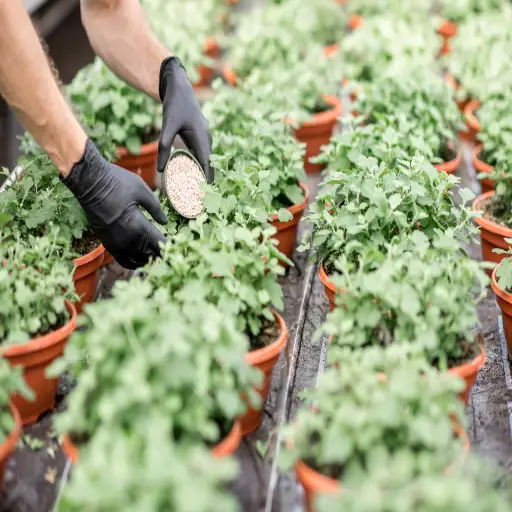
What happens if you use too much Epsom salt?
When Epsom salt is abused in gardening, it affects the soil and the plants in negative ways. From my perspective, the most important concern is the excess magnesium in the soil, which can result in too much magnesium and so disturb other vital nutrients like calcium and potassium. This situation can impede root growth and damage the nutrient absorption capabilities of the plant. Additionally, soil salinity quarter can be increased by overuse of salt and leads to a negative reduction in water taken by roots which aggravates dehydration and plant stress.
- Magnesium Levels: Make sure that magnesium levels are limited to 60 ppm. To avoid creating excess, constant monitoring of soil tests is a priority.
- Application Rate: For foliar sprays or water, do not exceed 1 tablespoon of Epsom salt in a gallon or else. One tablespoon of salt is also suggested for soil measuring 12 square feet. For supplementation, these rates are moderate and do not alter nutrient addiction.
- Frequency: Restrict to one application a month at the maximum unless there is a specific deficiency related to magnesium as indicated by the soil tests.
Taking care of these guidelines ensures that all the advantages of Epsom salt are reached while posing minimal risks to the soil ecosystem and plant health.
Can it cause magnesium toxicity?
Indeed overusing Epsom salt can cause magnesium toxicity which is quite rare when used in moderate amounts. Magnesium toxicity usually results when there is an over-accumulation of magnesium in the soil which leads to nutrient uptake imbalance within the plants. This phenomenon can hamper the absorption of critical nutrients such as calcium and potassium resulting in severe deficiencies even if those nutrients are abundantly available in the soil.
- Maximum Application Rate: Epsom salt should not exceed one tablespoon per fifteen liters of water for foliar uses or one tablespoon per twelve square feet of land for Epsom salt soil application.
- Frequency Control: Application can be made only once a month unless the soil tests show a severe deficiency of magnesium.
- Monitoring Soil Tests: Magnesium levels should be tested from time to time to make sure they are not exceeding the desirable mark of about 50 to 120 ppm parts per million for the health of the plant.
By following these guidelines, the impact of magnesium toxicity is minimal and at the same time supports plant growth.
How to avoid overuse around the base of the plant?
Like the over-application of magnesium, under-application is also quite harmful to your plants.
- Dilution Accuracy: Magnesium must not be applied without first dissolving Epsom salt. For foliage application, a maximum of 1 tablespoon for every 15 liters of water can be used, while for soil application, 1 tablespoon for every 12 square feet is ideal.
- Application Uniformity: The solution must not be allowed to accumulate around the plant’s base. Rather, it should be distributed uniformly across the soil surface to maximize the plant’s nutrient uptake.
- Application Distance: Always maintain a minimum distance of 3-4 inches from the stem to avoid the risk of salt accumulation and damage to the plant.
- Frequency Regulation: Unless scientifically confirmed using soil testing, refrain from applying magnesium more frequently than once a month.
- Monitoring Magnesium Levels: To monitor the recommended magnesium level range of 50-120 ppm, periodic soil testing must be done. Once the levels drop below this threshold, only then should application be done.
These factors ensure no overuse of magnesium and are optimum for plant health and growth. With utmost care, all of these goals can easily be accomplished. You just need to plan.
Understanding the Science Behind Epsom Salt for Plants
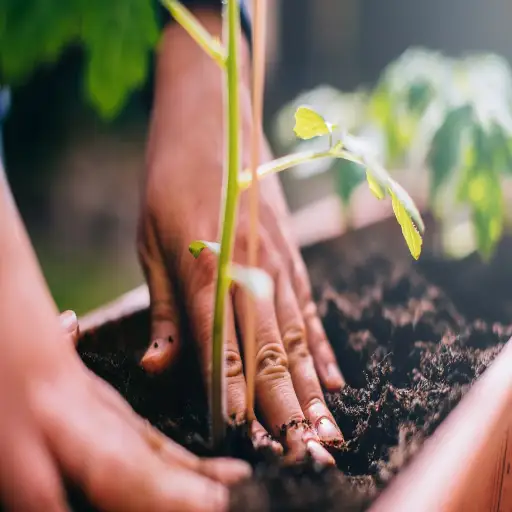
How does it enhance photosynthesis?
Magnesium, which is a part of Epsom Salt (MgSO₄·7H₂O), is important for improving photosynthesis. In this action, magnesium acts as a light-capturing element because it is an important component of the chlorophyll molecule. If magnesium is insufficient, a plant has difficulties producing energy or synthesizing carbohydrates, encountering an overall suboptimal growth plan.
- Chlorophyll Synthesis: magnesium functions as a core atom of a chlorophyll molecule, enabling vital light absorption.
- Optimum Levels: Plants can adequately undergo photosynthesis and avoid the risk of magnesium toxicity if the soil magnesium level is maintained between 50 and 120 ppm.
- Enzymatic Activation: Magnesium transforms from a structural function to an enzymatic one, acting as a promoter for many photosynthesis-related enzymes, ATP-synthase amongst them, thus providing particle energy needed for the plant’s life processes.
With the reasonable application of Epsom Salt and soil testing, we directly accomplish the needed situations for photosynthesis to occur proficiently and robust plant growth to be fostered.
What makes it an important nutrient for plants?
Magnesium is a crucial nutrient for plants due to its multidisciplinary significance in physiological and biochemical functioning. For instance, magnesium is the central atom in a chlorophyll molecule. This means that it plays a role in the absorption of light which is important for photosynthesis in plants. In addition, plants also require magnesium for the synthesis of chlorophyll. When polymeric innate energy/ATP is available, carbon dioxide can be turned into sugars. Plants struggle to efficiently convert sunlight into chemical energy without enough magnesium within the body, leading to carbohydrate production and growth being negatively impacted.
- Chlorophyll Composition: Magnesium is the Nucleus of the chlorophyll molecule. For a plant to be able to capture light energy, a deficiency cómpounds the structure leading to the inefficiency of photosynthesis.
- Enzyme suffixation: More than 300 statements are enlisted as transformational within MKU’s assault. With the help of chlorophyll, ATP synthesis is identified as energy energy-dense compound created for biochemical actions.
- Mid Soil Levels: The concentration of magnesium for plant uptake is above 120 ppm causing metabolic activations within plants supporting growth.
- Nutrient Metabolism: Magnesium helps in the distribution of carbohydrates and other nutrients throughout the plant tissues, ensuring an adequate supply of energy to various parts of the plant.
Regular soil tests along with Epsom salt-controlled amendment integrate helpful magnesium levels. These factors endorse magnesium’s unquestionable importance in ensuring the productivity in the plant increases.
Reference sources
Frequently Asked Questions (FAQs)
Q: What are the benefits of using Epsom salt for plants?
A: Epsom salt can be beneficial to plants by providing essential nutrients like magnesium and sulfur, which help improve the uptake of other nutrients such as nitrogen and phosphorus, aiding in overall plant health and growth.
Q: How much Epsom salt should be used per gallon of water for plants?
A: A common recommendation is to use one to two tablespoons of Epsom salt per gallon of water. This solution can be used to water the plants or as a foliar spray.
Q: Can Epsom salt be used as a fertilizer for all plants?
A: While Epsom salt can be effective for plants that need additional magnesium, it should not replace a balanced fertilizer. It is best used as a supplement for plants like tomatoes, peppers, and roses that may benefit from added magnesium.
Q: How often should I water my plants with Epsom salt solution?
A: It is generally recommended to use the Epsom salt solution once a month. Overuse can lead to an imbalance of nutrients in the soil.
Q: Is Epsom salt water soluble, and how does it affect absorption by plants?
A: Yes, Epsom salt is water soluble, which makes it easy for plants to absorb the magnesium and sulfur it contains when dissolved in water.
Q: Can I add a cup of Epsom salt directly to the planting hole?
A: When planting out tomato seedlings or other magnesium-loving plants, you can put a handful of Epsom salts in the hole to give them a boost. However, ensure it is well mixed with the soil to avoid root burn.
Q: How do I apply Epsom salt to established plants?
A: For established plants, you can mix one cup of Epsom salt per gallon of water and use it to water the plants. Alternatively, you can sprinkle a handful of Epsom salts around the base of each plant and water thoroughly.
Q: Are there any plants that should not be treated with Epsom salt?
A: While Epsom salt can be beneficial, it is not necessary for all plants. Be cautious with plants that are sensitive to increased magnesium levels or have specific soil pH requirements.
Q: What is the role of magnesium in plant growth, and why is it important?
A: Magnesium is crucial for plants as it is a central component of chlorophyll, which is necessary for photosynthesis. It helps plants grow by facilitating the absorption of other nutrients and supporting overall plant health.

